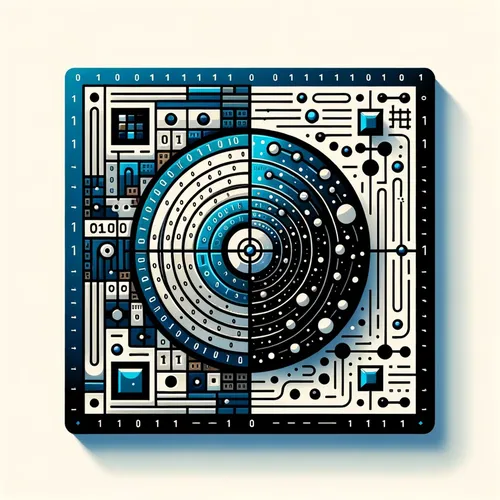Quantum Leap: Error-Transparent Programming Unleashes Million-Qubit Potential
- Author
- Quiet. Please
- Published
- Sun 18 May 2025
- Episode Link
- https://www.spreaker.com/episode/quantum-leap-error-transparent-programming-unleashes-million-qubit-potential--66139319
This is your Quantum Bits: Beginner's Guide podcast.
Today, I’m dropping you right into the heart of something extraordinary—no preamble necessary. Just this: Two days ago, the Majorana 1 processor was officially introduced, designed to scale quantum computers into the million-qubit realm. I can practically feel the hum of possibilities vibrating through the lab walls. Imagine the Majorana 1: hardware-protected qubits engineered to survive the chaos of quantum noise. It’s as if quantum research just took a breath and suddenly decided to sprint.
I’m Leo—the Learning Enhanced Operator. In the world of quantum computing, that makes me a translator between the mind-bending strangeness of quantum mechanics and the everyday logic of digital life. And let me tell you: the past week was a watershed for quantum programming, an inflection point we’ll remember the way physicists recall Planck’s first leap.
What’s the latest quantum programming breakthrough? Let’s get right to it. This week, researchers at Quantinuum and IBM—two names synonymous with quantum ambition—jointly revealed a programming toolkit that leverages “error-transparent” algorithms. That phrase isn’t marketing hype; it’s a genuine leap over one of our biggest hurdles: quantum error correction. Picture trying to hold a soap bubble in your hand while typing code. That’s been our reality with qubits—they’re that delicate. Error-transparent programming lets us write quantum code that, for the first time, actively sidesteps most errors instead of frantically patching them afterward.
This is more than a coding trick. It’s the birth of a new paradigm. Think of it as learning a musical instrument that, for generations, refused to stay in tune. Suddenly, with this advance, the instrument harmonizes, and the music flows. Now, quantum programmers can build routines robust enough for real-world applications: from simulating molecules for new medicines, to optimizing entire logistics networks in ways classical computers simply can’t replicate.
Let me give you a glimpse behind the curtain. This week in the lab, I watched as a junior researcher sent a hybrid quantum-classical algorithm through the new toolkit. Instead of the usual barrage of corrections, the algorithm seemed to glide, riding quantum superpositions with a newfound confidence. Lines of code once riddled with error flags now ran clean. We stood around the output screen, silent but electrified—no exaggeration.
And this isn’t happening in isolation. Across the globe, from Google’s research offices in Zurich to Microsoft’s quantum labs in Sydney, the sense of urgency is palpable. Early adopters are already filing patents, rolling out infrastructure, and running quantum software they hope will shape not just their companies’ futures, but the very standards for our industry. The quantum era isn’t some sci-fi fantasy or far-off promise—it’s here, and this week’s breakthrough makes quantum computers easier, more practical, and more powerful for developers everywhere.
Of course, not everyone’s convinced. You might remember that back in January, Nvidia’s CEO Jensen Huang made headlines at CES in Las Vegas, saying quantum computers wouldn’t be truly useful for another 20 to 30 years. That skepticism rippled through the industry, fueling robust debate in boardrooms and late-night hackathons. But in the labs, on the front lines, we see the quantum age as not just possible, but already underway. No, we’re not three to five years out. We’re here.
Let’s zoom out and make this real. Just as the quantum state can be both a zero and a one—a living paradox—our world is balancing on the knife’s edge between potential and reality. In the same way that quantum superposition lets particles exist in multiple states at once, today’s quantum breakthroughs are both promise and realization, theory and application. It’s happening in parallel to the rapid...
